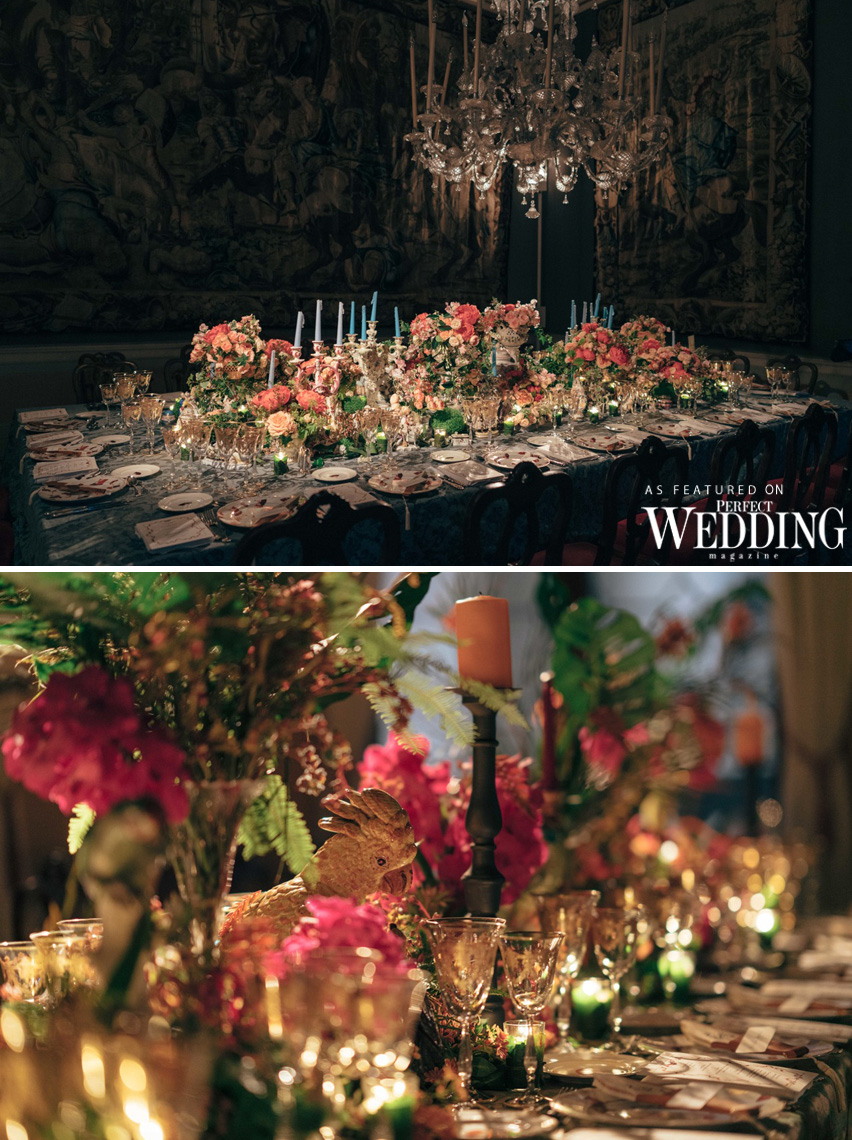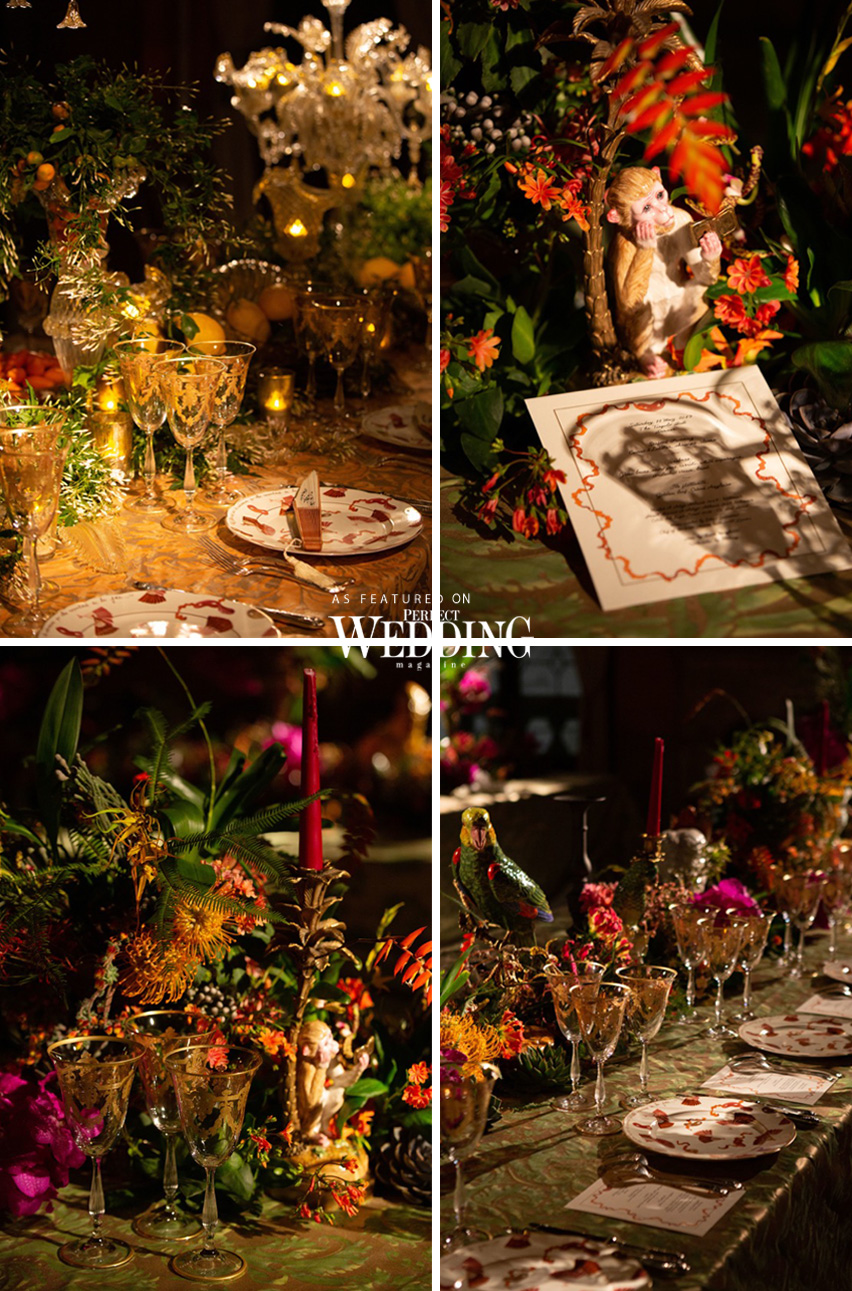DIOR CELEBRATES THE TIEPOLO BAL
An homage to Dior heritage and the House’s precious links with Venice, Dior celebrates the Tiepolo Bal.
Reconnecting with the House’s unique heritage, its passion for art and lavish balls – Dior celebrates, together with the Venetian Heritage foundation – for its 20th anniversary – the “Tiepolo Ball” in the heart of the legendary Palazzo Labia on May 11th.
Timed with the opening of the Venice Biennale, as a fundraiser for the restoration and promotion of Venice’s cultural heritage*, this charity gala revives a form of celebration the House holds dear: the sumptuous spirit of fancy dress balls, in particular the iconic “Ball of the Century” dreamed up by Charles de Beistegui in this legendary palazzo in 1951.
For the House of Dior, Venice is inextricably linked to the iconic “Ball of the Century”, hosted at the Palazzo Labia on September 3rd, 1951, by Charles de Beistegui, who owned the property at the time. The passionate aesthete, decorator, and art collector orchestrated the remarkable event perched on high stilts and bewigged, like a procuratore of the Republic of Venice. Christian Dior attended the ball, as did Salvador Dalí. Together they designed the black and white giants’ costumes that announced, with their choreographed arrival, the opening of the festivities.
“This was the most marvelous spectacle that I have ever seen, or will ever see. The splendor of the costumes rivalled the splendid attire of the figures in the Tiepolo frescoes on the walls(…). The magic of a summer’s night in Italy held us in its eternal spell and put us outside time(…). Parties like that are genuine works of art,” the couturier wrote in his autobiography, forever dazzled.

Other key ties to this legendary palace include a dress, a star, and a photograph, all three of which became iconic in their own right. Christian Dior designed a costume for Daisy Fellowes, the icon of high society, magnetic beauty and editor-in-chief of the French edition of Harper’s Bazaar. This creation would remain forever engraved in collective memory thanks to a photograph taken by Cecil Beaton and published in Vogue. In the photo, Daisy Fellowes faces one of the incredible frescoes celebrating Anthony and Cleopatra, painted by Giambattista Tiepolo to decorate the walls of the Palazzo Labia’s gigantic ballroom.
Through this remarkable ball and the palazzo, the House of Dior renews its ties with the extraordinary golden era of Baroque and the spirit of its avant-garde high society while supporting Venetian Heritage – whose chairman is the architect Peter Marino, a friend of the House – which promotes, in order to better preserve, Venice’s incredible heritage.
For its 20th anniversary, this unique association has partnered with the House of Dior. Together, they chose to evoke the “Ball of the Century”, part of Dior’s history and dream, and to dedicate this gala to the Palazzo Labia’s emblematic frescoes by Giambattista Tiepolo. Dubbed the Bal Tiepolo, this ball celebrates Venice, its traditions and its steadfast ties with French culture.

The event’s prestigious collaborators Bevilacqua and Rubelli, both Venetian heritage textile manufacturers, collaborated with the House, notably on fabric research, some of which were sourced from archives dating back to the 19th century, as well as on developing original velvets used in Maria Grazia Chiuri’s haute couture creations. For the occasion, the Artistic Director was inspired by the paintings of the Venetian artist Pietro Longhi and, above all, Dior’s rich legacy of emblematic photos and sketches: Monsieur Dior in his grand cape, René Gruau’s illustrations for the perfumes Miss Dior, Diorissimo, and Diorama, and the Labia dress designed by Yves Saint Laurent for Dior.
And so it is that ball gowns with capes – created exclusively for a handful of celebrities and friends of the House, including Karlie Kloss, Sienna Miller, and Dasha Zhukova – came to life in these noble fabrics in homage to the original costumes. The renowned photographer Ellen von Unwerth immortalized the guests in front of the frescoes.

The tablecloths at the charity dinner are by Fortuny, the legendary textile brand that upholds the traditions of the fabulous artist, tireless researcher, and artisan-inventor, Mariano Fortuny. These fabrics are from the incomparable collection of the original and contemporary archives of this Venetian institution, still produced today in the original factory on the island of Giudecca established a century ago. Cordelia de Castellane, Artistic Director of Dior Maison, also designed a series of one-of-a-kind plates that depicted the themes of each table.


A renewal of the historic friendship between Dior and Venice, in the name of excellence of savoir-faire and carrying on the tradition of Charles de Beistegui’s “Ball of the Century”, the evening was composed of performances such as the magical appearance of the Italian-Croatian artist Parolabianca, who trained under the great mime artist Marcel Marceau. Dancers and stilt walkers created moving tableaux to the strains mellophones, n’gonis (the Malian harp), and violins.
This grand spectacle was enhanced by the performers’ luminous costumes conceived by Maria Grazia Chiuri and the Italian artist Pietro Ruffo, with whom she previously collaborated on the House’s 70th anniversary fashion show. For this exceptional evening, he and the Artistic Director created sculptural reflective dresses called Constellation, representing the night sky and the 12 signs of the zodiac. Together, they were inspired by Greek astronomical symbols depicting richly detailed mythological figures. This ancestral and magnetic journey across the sky, the sun and the stars is a celebration of Christian Dior’s codes and passions as well as the perpetual regeneration of Venice, an eternal symbol of beauty and festivities.
Through this unique event, Venetian Heritage and Dior honoured the steadfast ties between France and Italy. Maria Grazia Chiuri demarcates this new connection through her creativity and fascination for art in all its forms, creating an intense multicultural dialogue rooted in a variety of sources.
*Proceeds from the event will fund the restoration of the monumental staircase designed by the architect Mauro Codussi in the Scuola Grande di San Giovanni Evangelista (a Christian confraternity building dating to the 13th century) and the iconic fresco Castigo dei Serpenti by Giambattista Tiepolo in Venice’s Galleria dell’Accademia.





Photo Credits:
Reception Dinner: Pierre Mouton for Dior, Details tables and Bevilacqua: Sophie Carre for Dior, Portraits of Stars in Dior & Atmosphere: Vigile Guinard for Dior
Venetian Heritage
Venetian Heritage is an international non-governmental organization based in Venice and New York. Its chairman is the architect Peter Marino, a friend of the House, and its director is Toto Bergamo Rossi. This organization encourages an array of cultural projects in Venice, including conservatory efforts, exhibitions, publications, conferences, and research, and helps publicize the city’s artistic heritage. It also sponsors and supports these efforts in the interest of better safeguarding Venice’s incredible heritage. Its major projects include the restoration of the Church of the Jesuits and the Church of San Zaccaria (one of the most beautiful examples of early Venetian Renaissance architecture) and, more recently, the renovation of the magnificent silver and gold-plated Gothic altarpiece of the Church of Salvador.
Palazzo Labia
Palazzo Labia was named after a Spanish merchant family that purchased a title of nobility in Venice. Built from Istrian stone at the end of the 17th century, it is composed of three facades: one opens out onto the Grand Canal, while the other two face the Campo San Geremia and the Rio di Cannaregio. It is famous for its reception rooms and particularly its ballroom, which was built in 1746 by the Italian Baroque architect Giorgio Massari. The interior is also decorated with frescoes by the Venetian painter Giambattista Tiepolo depicting the story of Anthony and Cleopatra. Since 1964, the palazzo has been the regional headquarters for the RAI (a major Italian broadcaster), which has begun renovations to the site.
On September 3rd, 1951, Charles de Beistegui hosted the famous “Ball of the Century” here, and it would go down in history. The Spanish-Mexican billionaire organized the ball to celebrate the end of renovations to his Venetian palazzo, which he purchased in 1948.
Pietro Ruffo
Born in Rome, Italy in 1978, Pietro Ruffo studied architecture at the University of Rome and at New York’s prestigious Columbia University. His work includes drawing, watercolors, and sculpture as well as complex and incredibly detailed works and objects that require an extensive production process. His art explores a wide array of social, moral, and political issues, including nature and freedom, which are central to his thought process.
For the “Tiepolo Ball”, in collaboration with Maria Grazia Chiuri, he dreamed up the illustrations for sculptural dresses called Constellation, which enhanced Parolabianca’s performance. Together, they etched out a humanity that appears more and more interconnected and borderless, inspired by the geographers, maps and astronomers of Antiquity, whose representations were extremely rich in detail. These creations are an homage to Christian Dior’s superstitious nature and love of astrology.
Maria Grazia Chiuri collaborated with the artist on the scenography for the 2017-2018 Fall-Winter fashion show that marked the brand’s 70th anniversary. For that event, he created a poetic depiction of a starry sky and the earth. The models walked across Pietro Ruffo’s renderings of the five continents, a design inspired by the globe created for the Paris Universal Exposition of 1900. Next, as if to guide Dior women in their world travels, the artist created a star-shaped fresco, a nod to Christian Dior’s lifelong lucky charm, a constant source of inspiration and guidance for the couturier.
Parolabianca
The Italian-Croatian artist Francesca Krnjak, also known as Parolabianca (literally “white word”), in a reference to a modern-day oracle, is a multifaceted talent. Trained by the famous mime Marcel Marceau, she combines dance, theatre, music, and writing in her work. For the “Tiepolo Ball”, she imagined an artistic performance featuring dancers and stilt walkers wearing jumpsuits embellished with reflective and luminous details designed by Maria Grazia Chiuri in collaboration with Pietro Ruffo, who created the work printed on fabrics.
Fortuny
Fortuny was founded in Venice by the Spanish artist Mariano Fortuny in the early twentieth century. Through his virtuosic work, which spans everything from fabric creation, fashion design, painting, engraving, photography, sculpting, scenography, and lighting design, revolutionizing the worlds of fashion, textiles, theater and lighting as a result of his genius. This multi-talented and avant-garde artist has become synonymous with his adopted city of Venice.
In fact, Venice was his main source of inspiration, along with his love of Antiquity, the Middle Ages, and the Renaissance, all of which have served as a springboard for excellence and creativity. In an effort to liberate the body, his works reimagined traditional clothing rules by designing timeless one-size, straight-cut pieces featuring straight lines. This approach can be seen in the design of the 1909 Delphos dress, which features finely pleated silk. The technical nature and fluid design of the fabric made it an iconic creation. His work was a major source of inspiration
for Marcel Proust, who referred to it in the fifth book of In Search of Lost Time. Still today, a century after its founding, Fortuny continues to produce fabric in the original factory, using the same machines and techniques that have been passed down from generation to generation. This unique company stands for a creative, artistic, and technological approach to textile manufacturing, remaining true to its illustrious legacy while embracing the innovative and enterprising spirit of its founder.
Bevilacqua
Bevilacqua is a family-run company founded in 1875 by Luigi Bevilacqua, a specialist in traditional Venetian weaving. The brand’s expertise has been passed down from father to son for generations. A painting by Giovanni Mansueti dating from 1499 reveals that one of the patrons who commissioned it was none other than a certain “Giacomo Bevilacqua –weaver”, the ancestor of the House’s founder. Building on its extraordinary savoir-faire, this House perpetuates the art of weaving in its factory in Venice. The emblematic sporarizzo, a velvet made of woven silk, illustrates, through its delicacy, all the richness and complexity of these techniques – frisée or cut – that create nuances of color and variations of design. Like precious presage, in 1892 Bevilacqua was based in the Palazzo Labia, the setting for the “Ball of the Century”, in 1951, to which the “Tiepolo Ball” paid homage on May 11th, 2019. Over the course of the 20th century, Bevilacqua has further underscored its excellence by partnering with private clients, palaces, and numerous churches. For this ball, Maria Grazia Chiuri designed dresses with bustiers that showcase Bevilacqua’s textiles and expertise. Some velvets were also specially developed for Dior, in collaboration with its design studios; the back of these velvet bustier bears the inscription Christian Dior.
Rubelli
Rubelli is a Venetian silk company that combines traditional savoir-faire with technological research. Founded in the 19th century, a period that saw a renaissance of Venetian ancestral heritage, this factory became specialized in fabrics for tapestries, wall coverings, and furniture. For the “Tiepolo Ball”, Maria Grazia Chiuri developed a velvet with graphic motifs based on Rubelli’s archival collection, which appears on the bustier of a majestic haute couture gown. This precious fabric called Modernart was developed by the architect Alfredo Carnelutti in 1934 for the Venice Biennale.




